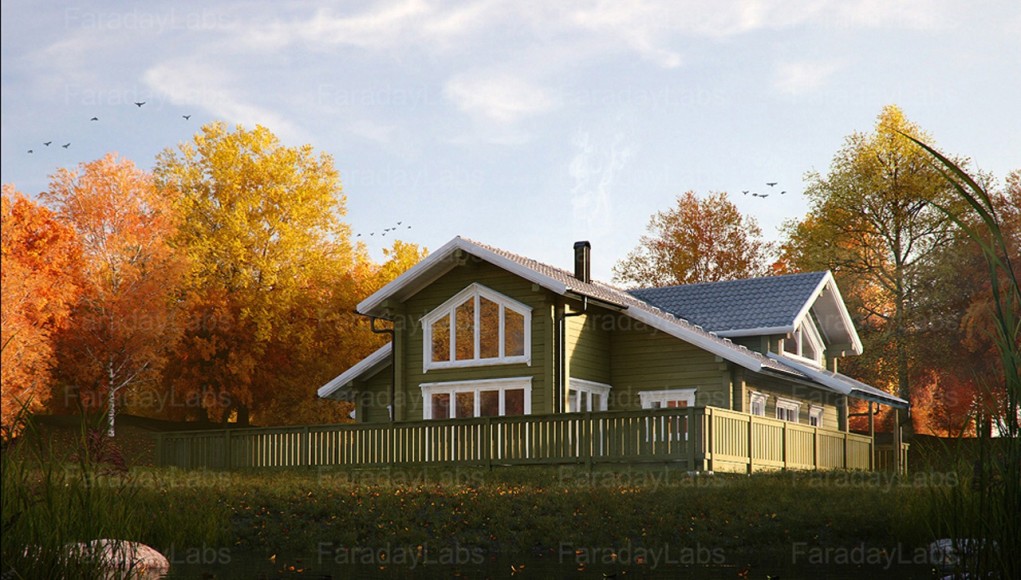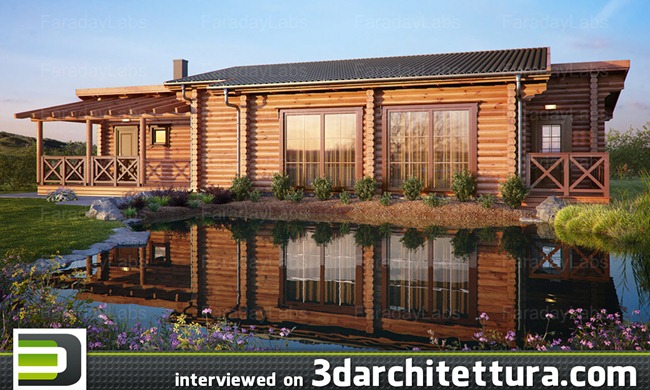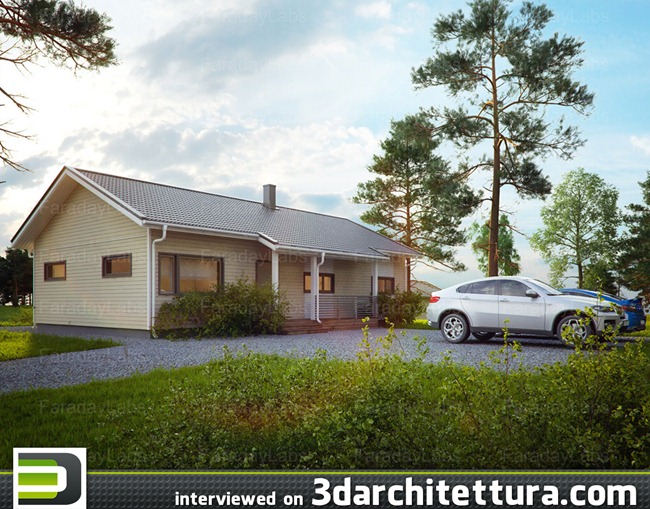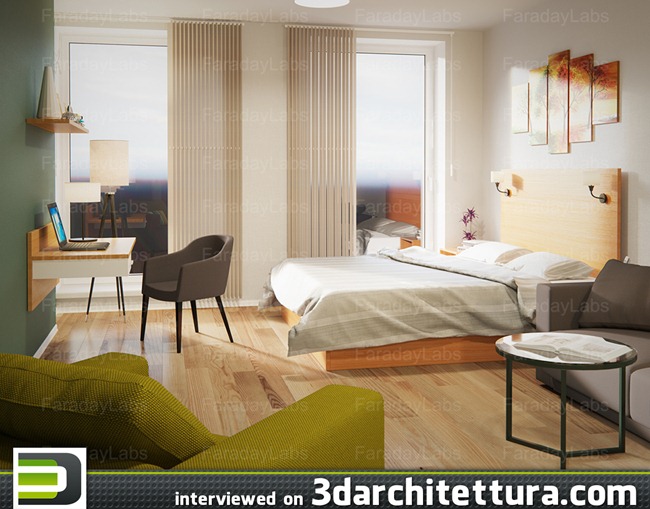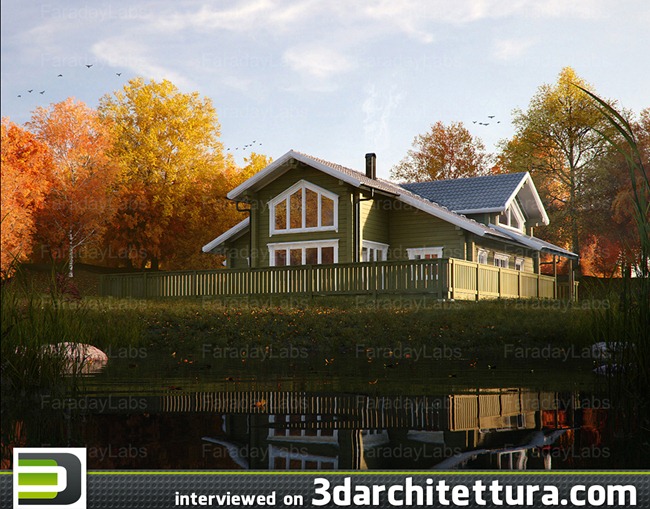Name: Igor Bobkov
Age: 26
Job: visualizer at Faraday
Country: Estonia
Web site: 3d.faradaylabs.eu, www.facebook.com/faradaylabs, www.linkedin.com/company/3d-faraday
3DA: Why have you decided to work in 3d-field and when have you started?
IB: Long ago in 2004, when I was still in high-school, in 9th grade, my brother showed me a photo of a landscape – in reality it was not a photo, but a 3d-render made with Terragen. Then I fell in love with landscape visualizations and tried to reach the level o the famous artists at www.renderosity.com After some fight all the masters left that web-site and I remained completely alone, so I decided to do something else connected with 3d. So in 2008 I started to play with 3ds Max, Zbrush, till in 2011 my brother suggested to move on to a more serious (and commercial) level. After spending a whole year studying the software deeper, we got our first client. And so it all started… But of course learning never stops, I discover new options in the software that is really endless…
3DA: Describe to our readers your usual workflow.
IB: From the beginning I try to get as much info from the client as possible, starting from construction details to preferred stylistics examples. I’ve heard quite often that starting some creative project (and all projects, interiors or outdoors are creative) one should never watch works of other people. I can agree with that but only when one has his personal style. I did not find my personal style at the moment, that’s why I need to learn, to be inspired by works of other more experienced artists. After all stylistic questions are settled I start modelling. Creating exteriors I find a lot of help in plugins like multiscatter, railclone and also – forest pack pro. When models are ready and light is fixed, I show all to the client. If he is satisfied, I continue working with textures and fixing materials – and then wait for the client’s approval once again. Only after that I make the final render and work on details in photoshop.
3DA: What was most difficult for you when you just started working in 3D? And what is now?
IB: Initially the most difficult part while learning, I suppose, is understanding terminology. There are a lot of different concepts in tutorials that were not clearly explained, while only some obvious results were demonstrated. As the time passes and you get used to the specific vocabulary, the whole studying process goes faster. Now the most difficult is to create chaos. In real life, for example, you do not find absolutely clean surfaces in architecture – there are water stains on walls, dust, dirt on the borders of asphalt roads and so on. One needs a lot of time to recreate all that, but clients do not want to wait, that’s why most of our current projects are “sterile”… So now getting rid of this sterility and creating some chaos is most difficult…
3DA: Looking back on your education process what you would have changed now? And what you consider right and would do exactly the same?
IB: Since my main work is closely connected with architecture, it would be useful of course to get more knowledge about architecture itself. Also at the moment I like static images less than animated. Sometimes you watch a render and start imagining that the water gets a light wave because of a fallen leaf, that birds and clouds are not fixed above the hill, but are flying by, that long curtains are not just hanging, but are moving with some wind… That’s why I wish I studied more animation and special effects… For the rest, I do not think I want to change anything, since all I have studied during this years has made my myself.
3DA: Which was the biggest problem that you faced working on a project and how have you solved it?
IB: The biggest problems, although it may sound strange, arrive from the clients themselves: a. Wrong understanding of visualization workflow: they believe that all changes are possible on every stage of the projects and cost absolutely nothing b. A lot of clients start to understand what they want just after they see the final render c. A lot of people consider 3d-visuaization as some jokey game and that can’t be paid a ot, as a “real work” But of course not only clients cause problems. For example once we got two requests from potential clients and both of them had the same delivery deadline. We can’t afford loosing clients, so we agreed to work. In the same time we knew that we can’t do all the amount of work alone and decided to delegate some parts to freelancers. We had an unpleasant surprise finding the prices higher and the quality lower than in our studio. So we did not gain anything on one of the projects, but at least we kept the client who later ordered us two more projects.
3DA: What forecast you can make about the future of 3d-world in general?
IB: Generally speaking 3d-industry will grow more. As in photography, a lot of beginners are approaching this field, but unlike photography here the beginners are not (and will not be) in competition with professionals. Now there are a lot of apartment-planning software that do not require any particular skills, for example planoplan.com. Everyone can make an interior of heir home and get a render that is comparable in its quality with the one made by a beginner. And after things like Occulus Rift are more popular, beginners can completely loose their target audience. Therefore to survive in this industry one should grow his expertise level and to differentiate oneself from amateurs.

















